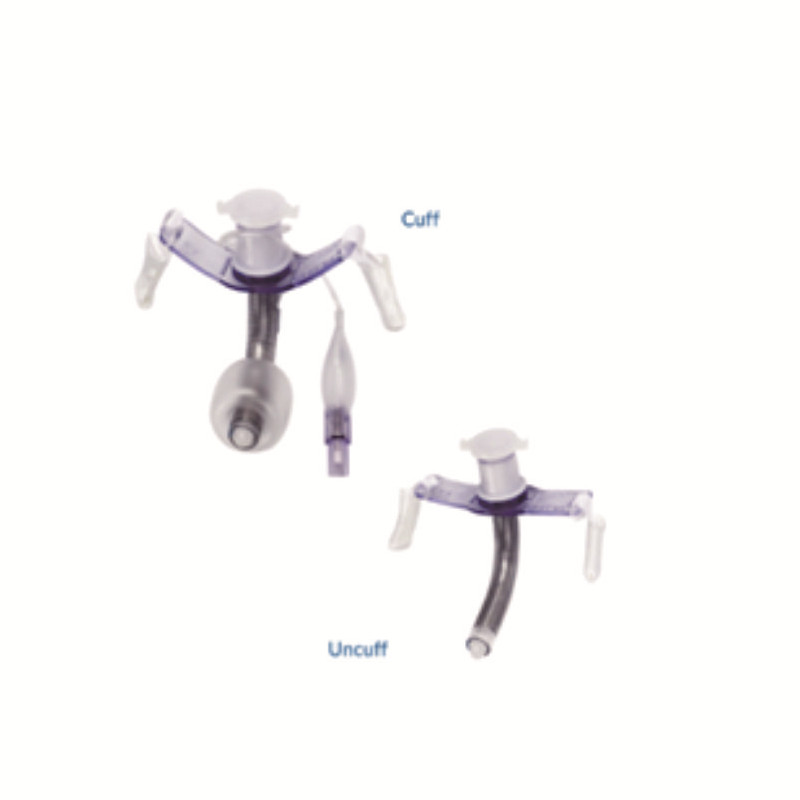
China factory of Reinforced Tracheostomy Tube with reasonable price. Reinforced tracheostomy tube is a medical device for tracheotomy, mainly used for long-term respiratory support or tracheal management Please contact us, if you are interested!
1. Product Introduction of Reinforced Tracheostomy Tube
Reinforced Tracheostomy Tube is used for clinical emergency tracheostomy to establish artificial airway. The reinforced tracheostomy tube has an additional stainless steel spring than the normal type. Reinforced-cuffed tracheostomy tube is comprised of the neck-plate, fixed belt, introducer, tube body, spring, cuff, inflating tube, indicator balloon and one-way valve, and the reinforced-uncuffed tracheostomy tube is comprised of the neck-plate, fixed belt, introducer, tube body, spring.
2. Product specification of Reinforced Tracheostomy Tube

|
Specification |
|
2.5#-10.0#, with cuff. |
|
2.5#-10.0#, without cuff. |
● Available with cuff and without cuff.
● Built-in stainless steel spring with the feature of anti-kinking.
● To establish artificial respiration channel.
● The patient-end is soft and reduces the damage to the airway.
4. Direction for use of Reinforced Tracheostomy Tube
Pre-operative preparation
● Routine pre-operative examination.
● For patients with severe dyspnea, continuous inhalation of high flow oxygen can be given.
● Necessary symptomatic treatment: Patients with high temperature should be given cooling treatment; those who are restless should be given sedative treatment; those who are injured outside the larynx should be given a certain dose of hemostatic drugs first.
● Prepare the device for intubation.
● Anesthesia before intubation.
● Confirm the specification of the tube.
● Preparation of patient's position.
The patient should be placed into the supine position on the operating table and, if possible, a small pillow should be placed horizontally under the patient's shoulder to keep the neck in hyperextension.
Insert the tracheostomy tube
● After performing tracheostomy in accordance with the procedure, the tracheal incision shall be quickly opened with a retractor or curved hemostatic forceps and properly expanded; if secretions cough out of the tracheal incision, they can be sucked out with an aspirator and then an appropriate tracheostomytube can be inserted into the expanded tracheal incision.
● After the intubation is in place, the introducer can be removed; if there are secretions in the lumen, they can be sucked out by the suction catheter.
● Inflate the cuff. When the trachea and the cuff are satisfactorily closed, the anesthesiologist shall examinethe pulmonary ventilation.
Fix the tracheostomy tube
● Place the tape on the neck-plate at the machine end of the tube around the patient's neck and tie a knot in the middle on the back of neck to a degree of tightness that is just enough to insert a finger. If the skin incision is longer, 1 or 2 stitches can be sutured above the incision, and the wound below the tube can be sutured to avoid subcutaneous emphysema and facilitate wound drainage. The wound can be covered with an open gauze placed around the tube. The machine end of the tube is onnected to HME or covered with 1 or 2 layers of aseptic wet gauze or connected to a ventilator.
Postoperative care
● The postoperative ward is required to be a rescue ward or an intensive care unit, and the ward should be quiet with a certain temperature and relative humidity. Sprinkle more water on the floor when the indoor air is dry to ensure sufficient water vapor. Keep the air circulating and fresh.
● The necessary rescue equipment and drugs should be prepared after operation.
● After operation, the patient should be in the horizontal recumbent position, or in semireclining position, making the neck stretch to facilitate unobstructed respiratory tract and cough. Because the patient has a loss of ability to suck after operation, the type and timing of diet should follow the doctor's instructions.
● The changes of the condition of primary disease, especially the changes of respiratory function, should be closely observed after the operation in order to prevent complications.
● Pay attention to keeping the lower respiratory tract unobstructed.
● Two to three days after operation, patients may be advised to get out of bed to prevent complications such as pulmonary infection. However, whether in bed rest or walking, the head should be in a straight position and should not be turned suddenly and violently. Do not excessively lean back and bend your head forward.
● The management of intubation, the monitoring and treatment of important organ function and the treatment of early and late complications after operation were carried out in accordance with hospital regulations.
5. FAQ of Reinforced Tracheostomy Tube
Q: What is the delivery time if I place my order?
A: Delivery time is around 45 days, if you have special requirements, pls check with us, we will try our best to meet you.
Q: Can you supply the relevant documentation?
A: Yes, we can provide most documentation including CE, ISO13485, FSC, FDA where required.
Q: Can I get samples before my order ?
A: Free samples are available.
Q: What are your prices?
A: Our prices are subject to change depending on supply and other market factors. We will send you an updated price list after your company contact us for further information.